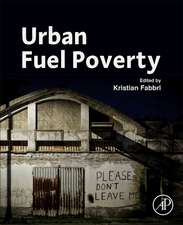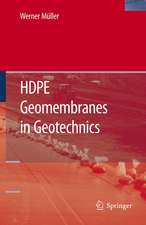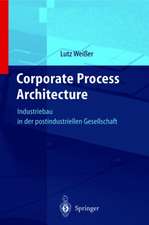Historic Indoor Microclimate of the Heritage Buildings: A Guideline for Professionals who care for Heritage Buildings
Editat de Marco Pretelli, Kristian Fabbrien Limba Engleză Hardback – 5 noi 2017
Offering readers essential insights into the relationship between ancient buildings, their original and current indoor microclimates, this book details how the (generally) virtuous relationship between buildings and their typical microclimate changed due to the introduction of new heating, ventilation, and air conditioning (HVAC) systems in historic buildings.
The new approach to the study of their Historic Indoor Microclimate (HIM) put forward in this book is an essential component to monitoring and evaluating building and artefact conservation. Highlighting the advantages of adopting an indoor microclimatic approach to the preservation of existing historic materials by studying the original conditions of the buildings, the book proposes a new methodology linking the preservation/restoration of the historic indoor microclimate with diachronic analysis for the optimal preservation of historic buildings. Further, it discusses a number of frequently overlook
ed topics, such as the simple and well-coordinated opening and closing of windows (an example extracted from a real case study). In turn, the authors elaborate the concept of an Historic Indoor Microclimate (HIM) based on “Original Indoor Microclimate” (OIM), which proves useful in identifying the optimal conditions for preserving the materials that make up historic buildings.
The book’s main goal is to draw attention to the advantages of an indoor microclimatic approach to the preservation of existing historic materials/manufacture, by studying the original conditions of the buildings. The introduction of new systems in historic buildings not only has a direct traumatic effect on the actual building and its components, but also radically changes one of its vital immaterial elements: the Indoor Microclimate.
Architects, restorers and engineers will find that the book addresses the monitoring of the i
ndoor microclimate in selected historic buildings that have managed to retain their original state due to the absence of new HVAC systems, and reflects on the advantages of a renewed attention to these aspects.Preț: 895.76 lei
Preț vechi: 1092.39 lei
-18% Nou
Puncte Express: 1344
Preț estimativ în valută:
171.45€ • 178.31$ • 143.67£
171.45€ • 178.31$ • 143.67£
Carte tipărită la comandă
Livrare economică 14-28 martie
Preluare comenzi: 021 569.72.76
Specificații
ISBN-13: 9783319603414
ISBN-10: 3319603418
Pagini: 30
Ilustrații: XI, 273 p. 90 illus., 30 illus. in color.
Dimensiuni: 155 x 235 x 23 mm
Greutate: 0.58 kg
Ediția:1st ed. 2018
Editura: Springer International Publishing
Colecția Springer
Locul publicării:Cham, Switzerland
ISBN-10: 3319603418
Pagini: 30
Ilustrații: XI, 273 p. 90 illus., 30 illus. in color.
Dimensiuni: 155 x 235 x 23 mm
Greutate: 0.58 kg
Ediția:1st ed. 2018
Editura: Springer International Publishing
Colecția Springer
Locul publicării:Cham, Switzerland
Cuprins
Architecture and Indoor Microclimate.- Indoor Microclimate.- Historic Indoor Microclimate.- The Study of Historic Indoor Microclimate.- The Investigation.- Buildings Indoor Microclimate Quality (IMQ): Assessment and Certification.- Design Criteria and Strategies.- Malatestiana Library in Cesena, Italy.- Villa La Petraia (Firenze) UNESCO World Heritage.- The Santuario della Visitazione del Valinotto, Turin, Italy.- Vleeshuis Museum- Antwerp (Belgium).
Notă biografică
Marco Pretelli’s areas of expertise include heritage conservation, the restoration of historic buildings, as well as the prevention and promotion of the same. He has also worked at the MIBAC (Ministry of Cultural Heritage and Activities) and is currently a Full Professor of Architectural Restoration and Conservation Theory of Historic Buildings and Heritage Conservation.
Kristian Fabbri, architect, has gathered substantial experience in the history of technical systems in buildings (the history of HVAC etc.), as well as building energy performance, indoor environmental quality, human behaviour, heritage and energy management. He is currently an Adjunct Professor of Building Simulation at the University of Bologna, Italy. He currently collaborates with Emilia-Romagna Region (Public Bodies), and small and medium-sized enterprises (SMEs) trade and professional training organizations. He qualified for the post of an Associate Professor in Environmental Physics
and Nuclear Engineering (09/C2 ASN 2013) and in Design and Architecture Technology (08/C1 ASN 2016).He can reached at: www.kristianfabbri.comTextul de pe ultima copertă
Offering readers essential insights into the relationship between ancient buildings, their original and current indoor microclimates, this book details how the (generally) virtuous relationship between buildings and their typical microclimate changed due to the introduction of new heating, ventilation, and air conditioning (HVAC) systems in historic buildings.
The new approach to the study of their Historic Indoor Microclimate (HIM) put forward in this book is an essential component to monitoring and evaluating building and artefact conservation. Highlighting the advantages of adopting an indoor microclimatic approach to the preservation of existing historic materials by studying the original conditions of the buildings, the book proposes a new methodology linking the preservation/restoration of the historic indoor microclimate with diachronic analysis for the optimal preservation of historic buildings. Further, it discusses a number of frequently overlook
ed topics, such as the simple and well-coordinated opening and closing of windows (an example extracted from a real case study). In turn, the authors elaborate the concept of an Historic Indoor Microclimate (HIM) based on “Original Indoor Microclimate” (OIM), which proves useful in identifying the optimal conditions for preserving the materials that make up historic buildings.
The book’s main goal is to draw attention to the advantages of an indoor microclimatic approach to the preservation of existing historic materials/manufacture, by studying the original conditions of the buildings. The introduction of new systems in historic buildings not only has a direct traumatic effect on the actual building and its components, but also radically changes one of its vital immaterial elements: the Indoor Microclimate.
Architects, restorers and engineers will find that the book addresses the monitoring of the i
ndoor microclimate in selected historic buildings that have managed to retain their original state due to the absence of new HVAC systems, and reflects on the advantages of a renewed attention to these aspects.Caracteristici
Offers readers essential insights into the relationship between ancient buildings, their original and current microclimates, and the introduction of new heating, ventilation, and air conditioning (HVAC) systems in such structures
Highlights the advantages of adopting a microclimatic approach to the preservation of existing historic materials, by studying the original conditions of the buildings
Proposes a new methodology linking the preservation/restoration of the historic microclimate with attention to historic plants (not only HVAC plants) and new standards for the optimal preservation of historic buildings
Highlights the advantages of adopting a microclimatic approach to the preservation of existing historic materials, by studying the original conditions of the buildings
Proposes a new methodology linking the preservation/restoration of the historic microclimate with attention to historic plants (not only HVAC plants) and new standards for the optimal preservation of historic buildings








